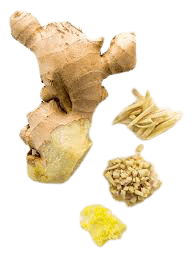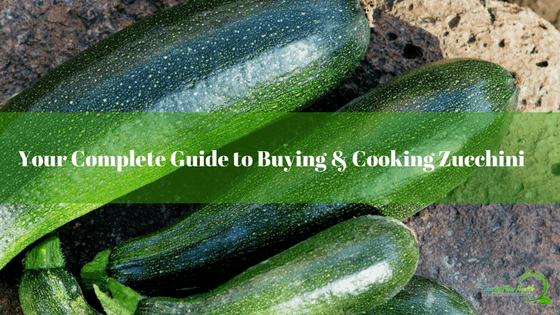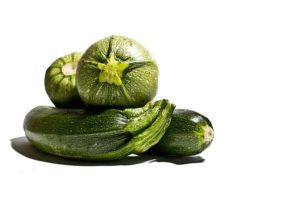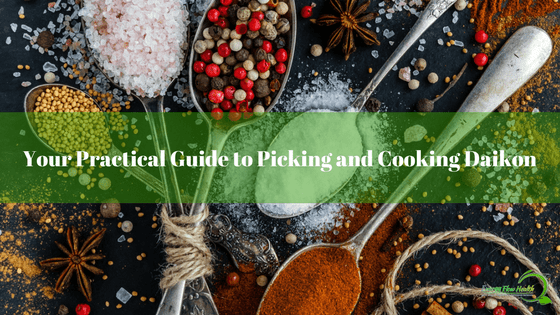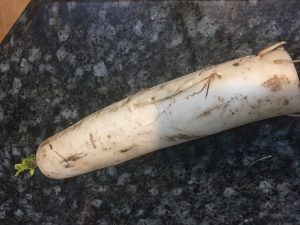- Energy Flow Acupuncture & Wellness Center24W500 Maple Ave Suite 212
Naperville, IL 60540630-335-1069 Clinic Hours
By Appointment Only
Blog
Healthy Recipes
Try this Simple Recipe to Aid Digestion
Despite the fact that a whopping 15 million + Americans take PPIs – medication to reduce stomach acid – stomach acid is an essential component of digestion. And too much acid is more than 9 times out of the 10 not the problem causing reflux. Oftentimes it has to do with the sphincter between the esophagus and stomach, called the Lower Esophageal Sphincter (LES), not functioning properly. And ironically, too little stomach acid is the most common cause of that dysfunction.
At Energy Flow Health, we look to restore normal digestive functions, including stomach acid production and keeping it in the stomach where it belongs. It takes time, and with proper care, our patients are often able to wean off their antacid medications partially or completely, depending on how long their stomach acid production has been suppressed.
In this article I just want to share a fun and tasty condiment recipe that can encourage the production of our digestive juices, including stomach acid, in a gentle way, to help with a healthy appetite, and to help with creating the environment in the digestive tract to be able to break down and absorb our food. This is great for those who feel their digestion is “sluggish”, feel full easily after eating, irregular appetite, or those who know they have low stomach acid. Try it and see what you think! If you have active GERD/reflux, consult your practitioner first before trying.
Ginger Pickle
1 Lemon, juiced
6-8 knuckles peeled ginger
1⁄2 tsp Sea Salt
Optional: 1 pinch of Asafelida (spice) onion-garlic flavor, bitter and acrid Indian Ingredient
Grate or finely chop the ginger.
Add the juice of a full lemon, add the sea salt, and mix it up.
Store this mixture for up to 7 days in a sealed jar and refrigerate.
Take 1⁄2 -1 tsp chew really well before meals and spit out pulp. This will train your body to produce more Hydrochloric acid in the stomach for better digestion & infection control.
healthy snacking during stressful times
Stress eating. Everybody’s doing it. I admit it happens to me sometimes. But to support our immunity during a pandemic part of it includes eating well. In this video I just share a few things that are in my kitchen. By no means the be all end all, just a few little tips for foods that won’t spike your blood sugar leading to more cravings.
Your Complete Guide to Buying and Cooking Zucchini
Zucchini is a chameleon vegetable
Chameleon vegetable? Strange images may pop into your head but what I mean is that zucchini, or summer squash as it’s also known, is very versatile. It is very bland so it’s great to take on the flavor of any seasonings or sauces.
Picking and Preparing
Look for a firm, smooth-skinned cylinder, and check for mold if it is wrapped in plastic. Beware that there are genetically modified zucchinis, so make sure to shop for organic if you want to avoid GMOs.
Zucchini can be eaten raw, sauteed, stewed, or steamed. Don’t boil it as it will turn to mush. It can also be used as a way to add fiber and moisture to baked goods. Who doesn’t love a good zucchini bread or muffin! Zucchini cooks quickly and has a high water content, so some people prefer to sprinkle the shreds, slices or cubes with salt and let the water seep out and wring it with a towel before sauteeing, stewing, or steaming.
Recently it’s gained popularity among Paleo dieters as a low-carb grain-free replacement for noodles or pasta. If you don’t have a fancy vegetable spiralizer, you can just use a vegetable peeler to make thin strips then slice those strips as you like or leave them wide.
Taste
What can I say about taste? It takes on more flavor when it’s sauteed – a buttery flavor I’d say. But if you shred and eat it raw, it will go well with almost any salad dressing, or just salt, pepper, and lemon or lime juice, or my favorite, with a homemade dairy-free pesto!
Health Benefits
One popular health benefit nowadays with obesity being a huge problem is that it is so low in calories and together with its versatility and mildness makes it a great stand-in for pasta as mentioned above or as a great way to get more fiber and less empty carbs.
Nutrition-wise, it’s high in vitamin C and pectin, which has been shown to benefit the arteries thus anyone concerned about cardiovascular health can feel good about eating it! Plus it’s a good source of potassium, and it’s high water content and natural electrolytes help regulate bowel movements. Other nutrients provided in decent amounts are B2, B6, and folate. B vitamins are essential for numerous metabolic processes and are important for hormonal health.
Recipes
One of my favorite ways to eat zucchini and also one of the simplest is fritters. Simply shred some zucchini, either by hand or in a food processor, season it with salt and fresh ground black pepper, and mix it with a scrambled egg or two, then pour into a hot skillet coated with a tsp or Tbsp of coconut oil or rendered solid grass-fed or pastured animal fat (beef, duck, lard, etc). Give it a minute or two to get golden brown then flip for another minute or two or until there’s no more liquid egg seeping through the surface when pressed gently with a spatula. You can serve with guacamole, salsa, or pesto, or as is!
Here is my recipe for the other super-vegetable, Daikon. Enjoy!
Your all-in-one guide to Cooking Daikon
Your Practical guide to picking and Cooking Daikon
As part of my Veggies – past the ick and on to the yum series, we will first visit the vegetable that inspired me to write this blog. The white radish, known as daikon, is commonly eaten by many Asian cultures and in many ways. I have had it in Indian sambar, a spicy lentil stew or soup, pickled, cultured, stir-fried, and even raw. Next time you go to the grocery store, look for it as it may astound you – it can get really big!
Picking and Preparing
This radish looks a lot different from the little red radish you commonly see by the bunch or bag. It is either torpedo-shaped or cylindrical and can be up to 2 feet long and 3 inches in diameter. The outside may look a bit dirty, but don’t worry. Once you get it home, you can use your vegetable peeler to remove that outer dirty part just like you’d peel a carrot, and what you will see is a snow white firm flesh. Just make sure to choose one that is firm, the same way you’d choose any other type of radish.
Then depending on what you want to do with it, you can slice it thickly or thinly, or shred it. I like to do 1/4″ slices cut into half circles for stir-fry, and 1/2″ slices for a soup or stew. Try shredding it onto a salad like a carrot.
Taste
This radish is very mild. The common red radish is definitely spicier. That makes daikon a great choice for those who like a crisp veggie in their stir fry but that can turn tender when cooked.
Why Eat This Thing? – The Health Benefits
Daikon root is a powerfully healthy food. Most of all it aids digestion because it’s full of beneficial enzymes that break down fats and proteins. Secondly, it’s full of important nutrients especially vitamin C, potassium, calcium, and phosphorous. Thirdly, it’s an awesome detoxifier. Daikon root has been found to neutralize the effects of a common carcinogen called nitrosamine, thus aiding in protecting against cancer. Not only does it help rid the body of toxins, but it’s also decongesting and diuretic when eaten raw, while also aiding in regulating blood pressure.
Recipes
The 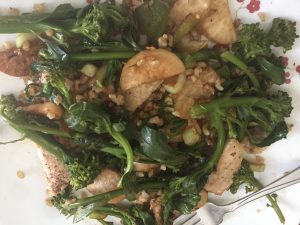
For the more adventurous, or those interested in really enhancing its digestive benefits, please try this simple lacto-fermentation recipe. The ingredient list is short, and it’s much easier than you think it is.
Lastly, another very no-brainer choice is to simply chunk it and cook it like carrots into your soup or stew. I’ve even roasted it with other root veggies!
Here’s a picture of a meal I made that includes stir-fried daikon.
Check out my other post about how to cook Zucchini.

